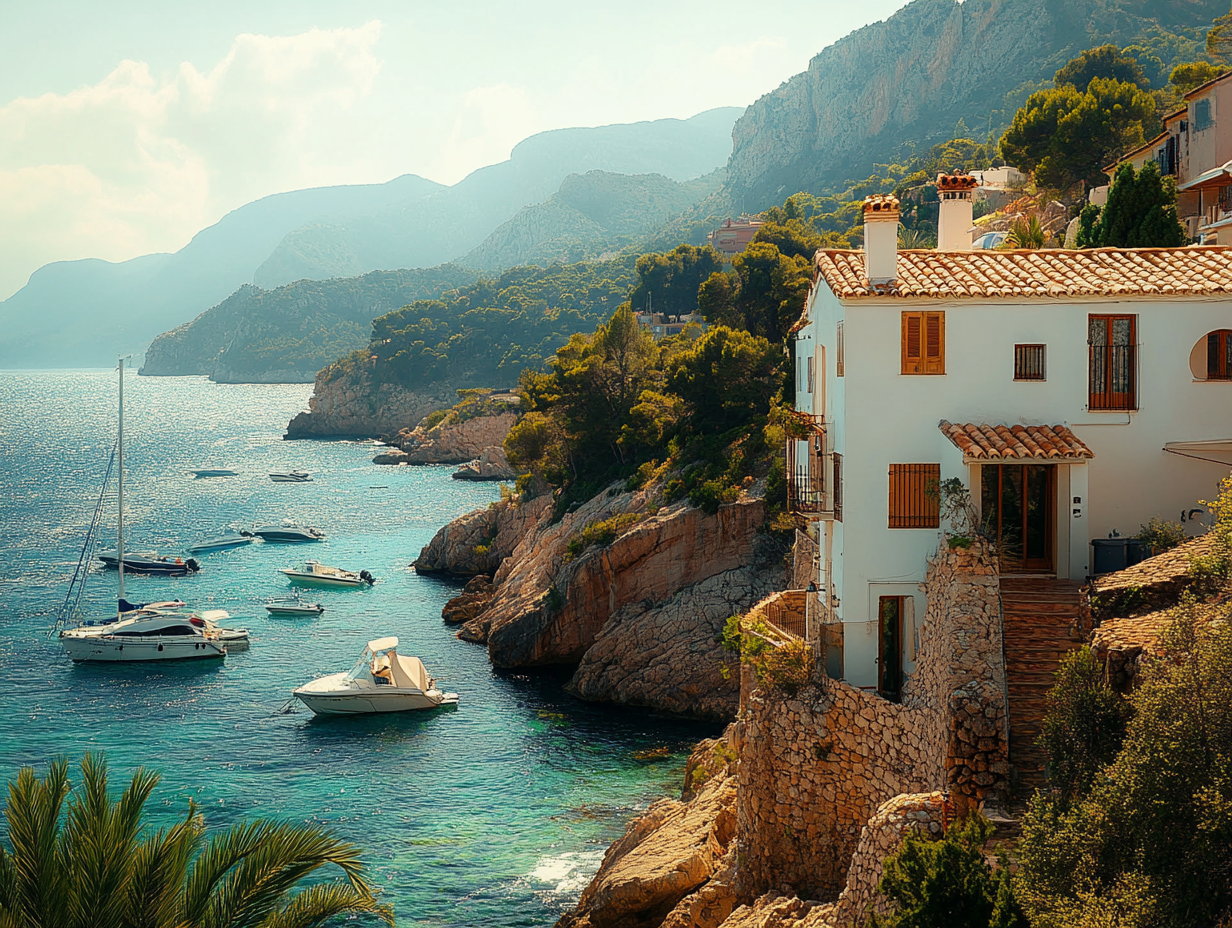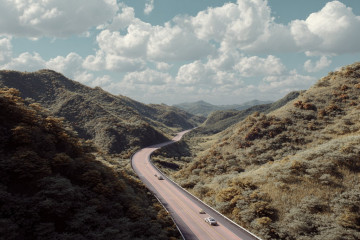The top things to know before your next trip to Spain.
With its world-class art, energetic festivals, and a food scene that practically encourages ordering one more for the table, Spain is a place where prioritizing enjoyment reigns supreme. You’ll never get bored in Spain, either. Historic hotspots? Head to Seville. Late-night partying and a great restaurant scene? Check out Barcelona. Dramatic landscapes and avant-garde architecture? You’ll find us in the Basque Country.
Whether you’re planning on sipping vermouth in Madrid, hiking the Picos de Europa, or lounging in Ibiza, Spain should be on your travel list for 2025. Heading there soon? Here’s what you need to know before you go.
Documents and Visas That You’ll Need
For most travelers, Spain requires a valid passport with at least three months of validity beyond your planned departure. U.S., Canadian, U.K., and most E.U. citizens can stay visa-free for up to 90 days in a 180-day period under the Schengen Agreement.
If you’re staying longer, a visa is required. Always carry ID because Spain has strict ID laws, and police may (rarely, but you never know) request to see your passport. If you’re an E.U. citizen, a national ID card often does the job. It’s worth keeping a copy of your documents in your suitcase, too: some Spanish cities like Barcelona struggle with pickpockets.
Currency and the Cost of Things
Spain uses the euro (€). Credit and debit cards are widely accepted, but cash is handy for small purchases, especially in rural areas. Tipping isn’t mandatory, but rounding up the bill or leaving 5-10% for excellent service is common. If you’re eating at a fancier restaurant or dining with a large group, a service charge is typically added to the bottom of your bill automatically.
While Spain is generally affordable compared to other Western European countries, big cities like Madrid and Barcelona are pricier. Expect to pay around €1.50 for a coffee, €3 for a beer, and €15-30 for a mid-range meal.
Transportation in Spain and Transport Tips
Spain has an extensive and efficient transport system. The AVE high-speed trains connect major cities quickly, while regional trains and buses are great for smaller towns.
In cities, metros, buses, and taxis are reliable–get a transport pass for savings in many of the big cities. Rideshare apps like Uber and Cabify are available but not as dominant as local taxis.
Renting a car is ideal for countryside explorations but avoid driving in big cities where parking is a nightmare (Seville, we’re looking at you). If you’re island-hopping, ferries connect the Balearic and Canary Islands.
It’s worth planning your travels before you buy a transport pass or hire a car, though: many Spanish cities are best explored on foot (Madrid, Barcelona, Seville) or via e-bikes, which you’ll find dotted throughout the most popular spots and usable via apps.
Spanish Cuisine and Eating Culture
Spanish dining runs on its own schedule: lunch is the main meal (typically between 2-4 p.m.), and dinner rarely starts before 9 p.m.
Tapas are small plates meant for sharing and are often enjoyed while standing; tapas culture is a big deal in Spain. Try regional specialties like paella in Valencia, pintxos in San Sebastián, or cochinillo (roast suckling pig) in Segovia.
Breakfast is light–often a coffee with a pastry or toast with tomato (pan con tomate). In Andalusia, locals often opt for mollete (soft bread with olive oil, tomato, or cured meats).
Hungry before lunch? Grab a bocadillo (simple sandwich) or churros con chocolate for a mid-morning snack. One of the best things about Spain? Churros are typically a breakfast treat, not a dessert.
Healthcare and Health Considerations
Spain has excellent healthcare, with both public and private options widely available. E.U. travelers should bring an EHIC card for state healthcare access, and U.K. travelers can now bring a GHIC. Regardless, travel insurance is highly recommended for all visitors.
No vaccines are required beyond routine ones. Pharmacies (farmacias) are everywhere and can offer medical advice for minor issues but bring a Spanish speaker with you for anything complex.
If you need emergency care, dial 112 (free and multilingual). For minor issues, you can visit a local clinic (called a centro de salud), but private clinics (clínicas privadas) generally often offer faster service for a fee.
Tap water is safe to drink in most cities, but some rural areas and the Canary Islands have a slight chlorine taste, but bottled water is common and available there.
Weather and the Best Seasons for Travel
Perhaps unsurprisingly, Spain’s climate varies by region. Summers (June-August) are hot, especially inland, with temperatures often exceeding 95°F (35°C) in Madrid and Seville. The Mediterranean coast is warm but breezy.
Winters (December-February) are mild in the south but can be cold in the north and mountainous areas. Spring (March-May) and fall (September-November) are the best times for comfortable sightseeing, in our opinion, with moderate temperatures, lower accommodation prices, and fewer crowds.
If you head north (e.g., Basque Country, Galicia), you’ll find it’s rainier year-round, while the Canary Islands are a top choice for that perpetual spring-has-sprung climate.
Packing for Spain
You’re welcome to leave your heels behind when visiting Spain, as the most important thing to pack is comfortable walking shoes—Spain’s cities are best explored on foot.
In summer, bring sunscreen, sunglasses, and a hat. If you’re traveling in winter, pack a warm coat, especially for the northern regions. A rain jacket is always useful for unpredictable showers, especially in the north.
If you’re visiting cathedrals, bring a scarf or shawl to cover your shoulders. And in rural areas, plug adapters (Type C/F) and power banks are handy, as outlets can be sparse.
Staying Safe in Spain
Spain is generally very safe for travelers, including solo and LGBTQ+ visitors. Pickpocketing is the biggest concern, especially in tourist-heavy areas like Barcelona’s La Rambla or Madrid’s Puerta del Sol. Always keep your bags zipped and valuables secure and hidden away.
Female travelers will find Spain relatively safe, but nightlife areas can get rowdy, so stay aware and follow the same precautions you’d exercise in any big city. LGBTQ+ travelers will feel welcome, particularly in cities like Madrid, Barcelona, and Sitges, where Pride celebrations are massive.
Key Spanish Phrases to Know
If apps like Duolingo just aren’t cutting it (el oso bebe leche, anyone?), here are some key phrases to get you started in Spain:
Hello: hola
Thank you: Gracias
The check, please: La cuenta, por favor
Where is the bathroom?: ¿Dónde está el baño?
A beer/tapas, please: Una cerveza/tapa, por favo
I don’t speak Spanish: No hablo español
How much does it cost?: ¿Cuánto cuesta?
Excuse me / Sorry: Perdón / Disculpe
Internet, Wi-fi, and Connectivity
WI-fI is widely available in hotels, cafés, and public spaces but can be slow in rural areas. SIM cards from providers like Movistar, Vodafone, and Orange offer affordable data plans if you need constant connectivity.
You can also look into global ESIM options like HolaFly or Airalo, although their prices are typically a fair bit higher. Spain uses Type C and Type F plugs with 230V voltage, so bring an adapter if needed. Some hotels require keycards for power in rooms, so charge devices when you’re in. If you’re working while traveling, the most popular Spanish cities all have coworking spaces with high-speed wi-fi, too.
Watch Out for These Scams
Pickpocketing is common in tourist hubs, with distraction techniques like fake petitions, “spilled” liquids, or street performances used to lift wallets. Always be cautious of overly friendly strangers offering help with luggage or ATMs—it’s better to seem rude than get scammed.
In restaurants, double-check the bill for unwanted extras. While this isn’t a scam exactly, some restaurants will offer bread and olives before your main meal, which are rarely free, so expect to see them on the bill afterward, too.
When moving around Spain, it’s important to stay aware as well. In some cities like Barcelona, taxi drivers may take longer routes to drive up fares (this is especially a problem at night from BCN airport). Instead, use apps like Uber when possible.



